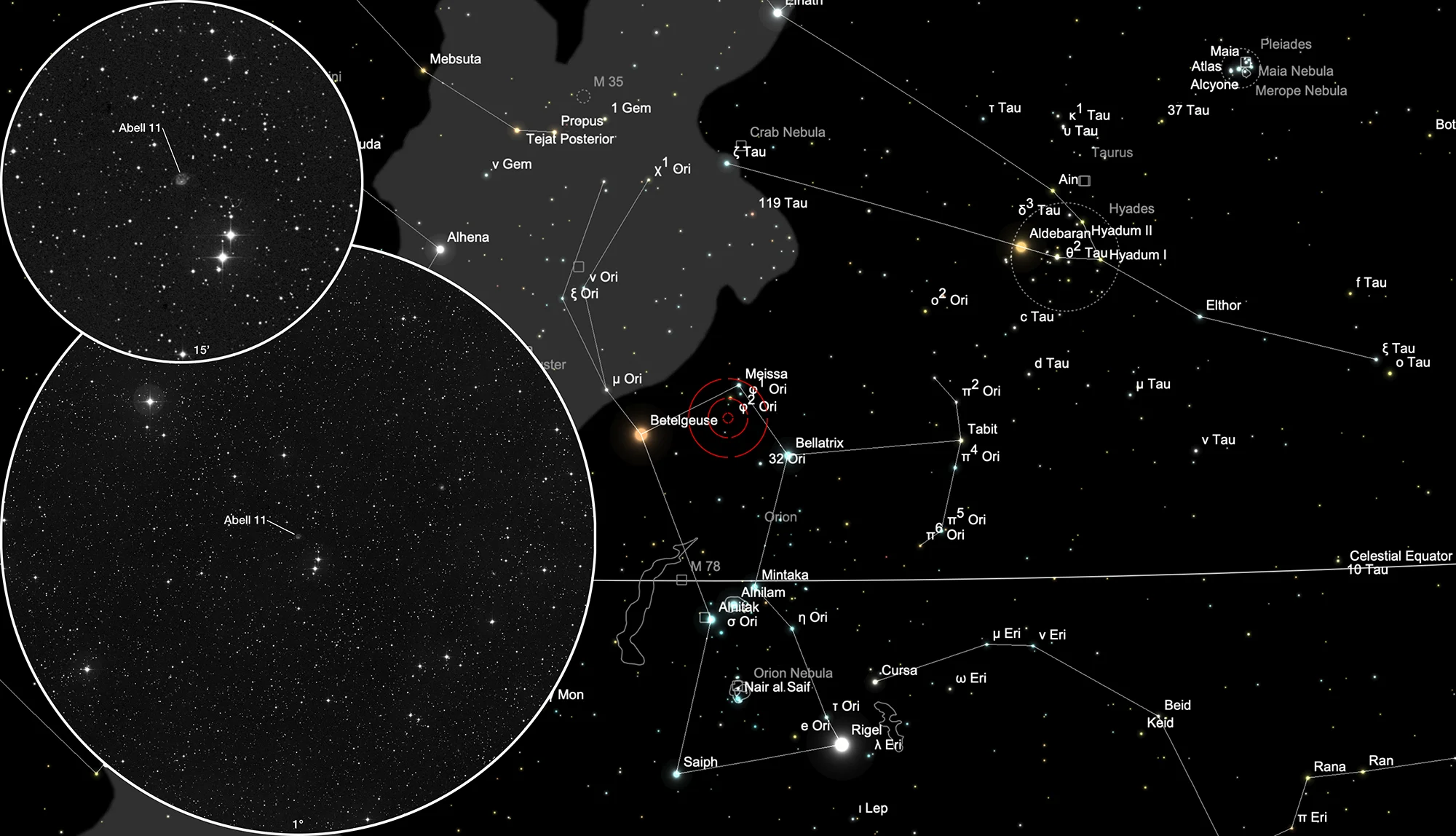Galaxy Abell 11

History
Abell 11 was discovered in 1964 by the American astronomer George Ogden Abell on the photo plates of the Palomar Observatory Sky Survey (POSS). He described its morphological appearance as «d» — a not so symmetrical ring of variable thickness. [332]
The two Czechoslovak astronomers Luboš Perek and Luboš Kohoutek compiled in 1967 a catalog of all the planetary nebulae of the Milky Way known at the time and listed Abell 11 as PK 196-12.1. [146]
In 1983 Abell 11 was observed by Julie H. Lutz and James B. Kaler with the Intensified Image Dissector Scanner (IIDS) at Kitt Peak National Observatory. They noted: «No emission lines were observed, even though the integration times should easily have been sufficient. A faint reddened continuum was observed at one position, and it is very probable that A 11 is a reflection nebula.» [649]
In 1987 French astronomer Agnès Acker and her co-authors published a study of misclassified planetary nebulae and doubted that Abell 11 was a planetary nebula The comment reads: «Not a PN? Reflection neb.? (LK 83); undet. (ESO, this work); no IRAS det.» [437]
Physical Properties
Based on data from the 2MASX sky survey published in 2006 Abell 11 is a galaxy. [650] This can also be verified on the images from the PanSTARRS DR1 survey. [147] However, not much seems to be known. It looks like a barred spiral galaxy with ring structure that shows tidal trails, possibly originating from a previous collision with another galaxy.
| Name | PN A66 11 |
| Object Type | Galaxy |
| Right Ascension (J2000.0) | 05h 37m 22s |
| Declination (J2000.0) | +08° 15' 29" |
| Parallaxes | 1.2597 mas |
| Angular size | 0.32' × 0.243' |
| Magnitudes | G 19.565487; J 13.154; H 12.535; K 12.514 |
| Identifiers | 2MASS J05372156+0815293; 2MASX J05372154+0815290; Gaia DR2 3334489914285983616; Gaia DR3 3334489914285983616; PK 196-12 1; PN A66 11; PN ARO 217; TIC 436335735; WISE J053721.57+081529.1; WISEA J053721.57+081529.1 |
Finder Chart
The Galaxy Abell 11 is located in the constellation Orion. On 17 December it is in opposition to the Sun and crosses the meridian at local midnight. The best time to observe is August to May, when it is highest at night.
Visual Observation
400 mm Aperture: The position of Abell 11 can be clearly determined based on distinctive star formations. However, even at high magnification, nothing of the galaxy is discernible. — 400 mm f/4.5 Taurus Dobsonian, Hasliberg, 16. 12. 2023, SQM 21.2, Bernd Nies
762 mm Aperture: The planetary nebula Abell 11 (which is not a nebula, but a galaxy) appears slightly elliptical, with the central area appearing darker. A brighter spot flashes on the longer elliptical side. Was this the supposed central star? — 30" SlipStream-Dobson f/3.3, Hasliberg, 26. 12. 2024, SQM-L 21.17, Elena + Eduard von Bergen
